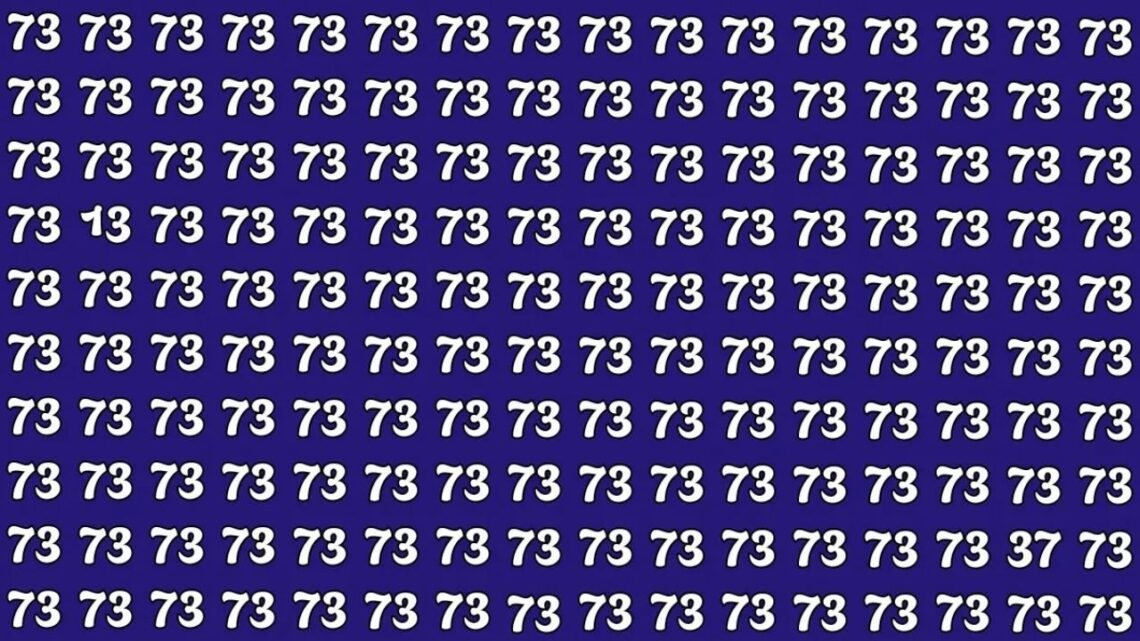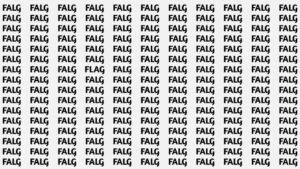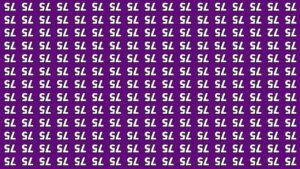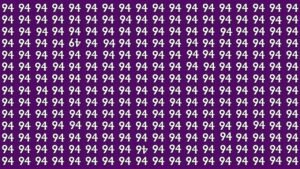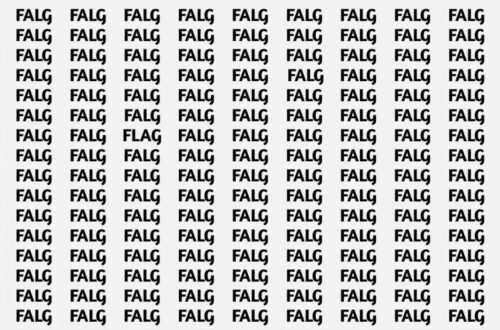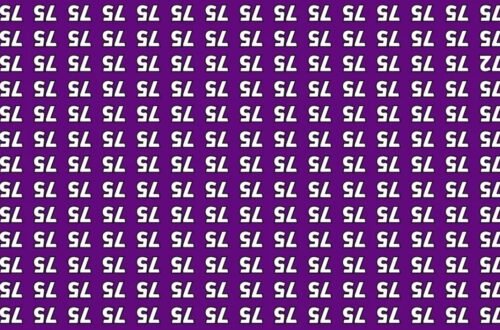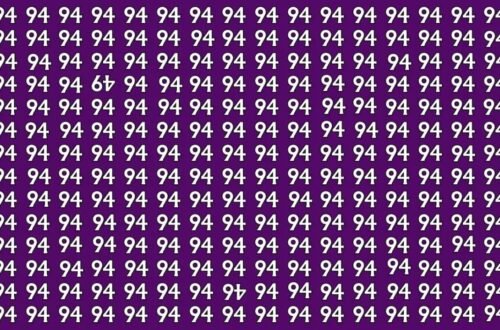Have you ever stared at an image so closely that your eyes felt tricked? That’s exactly what optical illusions do—they play with how your brain sees things.
These puzzles are fun, confusing, and even good for your mind. One such challenge is going viral right now: finding the hidden numbers 13 and 37 inside a sea of 73s—all in just 7 seconds.
At first glance, the picture looks simple, but when the timer starts, most people realize it’s not as easy as it sounds. Let’s break down how this illusion works, where the numbers are hiding, and why solving puzzles like these can sharpen your brain.
The Puzzle Challenge
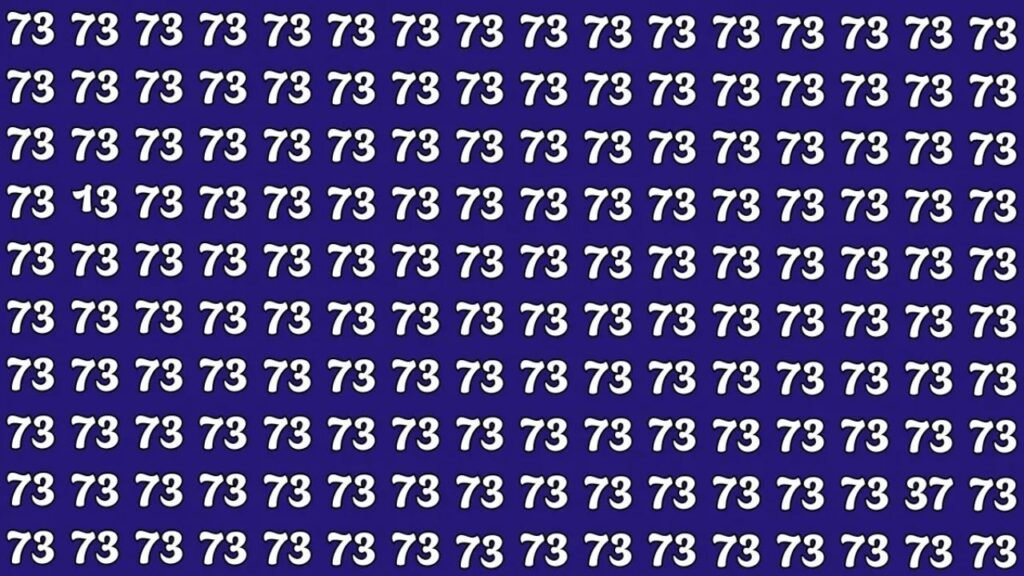
When you look at the picture, all you see is the number 73 repeated again and again in neat rows. Everything looks the same at first. But hidden in plain sight are the numbers 13 and 37, waiting to be spotted.
The twist? You only have 7 seconds to find them both. This puzzle tests not just your eyes but also your brain’s speed in processing visual details. Many people fail the first try because the repeated numbers confuse the eyes.
Exact Locations of the Hidden Numbers
If you couldn’t spot the numbers, don’t worry—you are not alone. These puzzles are designed to trick your brain. To make it clear, here is a simple table showing where the numbers are placed in the grid:
| Hidden Number | Location in the Grid |
|---|---|
| 13 | 4th row, 2nd column |
| 37 | 2nd row, 2nd column |
The numbers blend so well with the 73s that most people overlook them. But once you know the positions, your eyes will catch them instantly. That’s the magic of visual illusions—they hide the obvious right in front of you.
Why Is It So Hard to Spot?
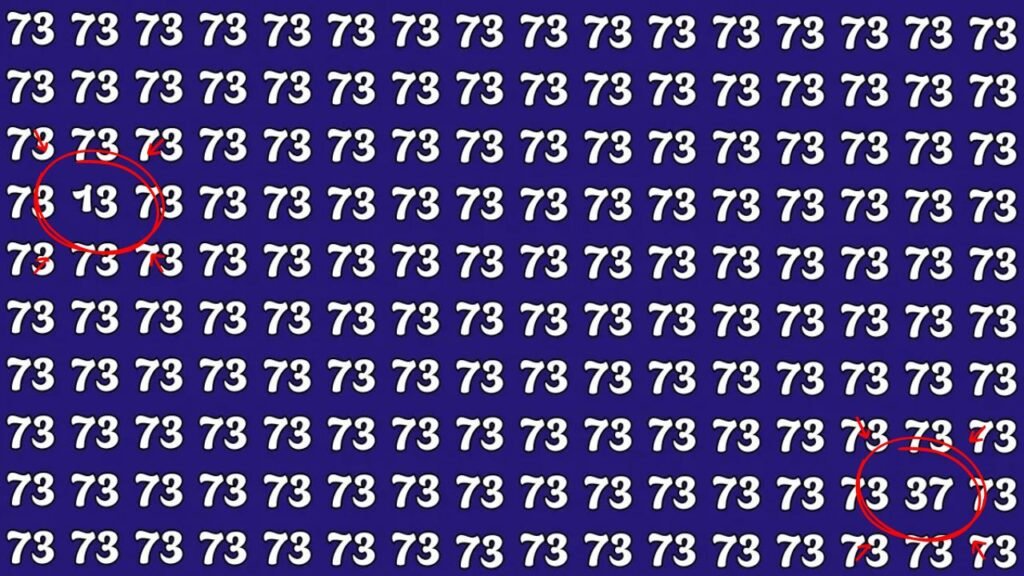
Our brain loves patterns. When we see the same number repeated, the brain assumes that everything is identical. This is called pattern recognition. While it usually helps us move faster in daily life, it can also trick us into ignoring small changes.
That’s why the numbers 13 and 37 disappear into the crowd of 73s. Even if your eyes land on them, your brain might not notice until you look more carefully. It’s like searching for a needle in a haystack!
Benefits of Optical Illusions
You might think these challenges are just fun games, but they actually give your brain a healthy workout. Here are some benefits:
- Improves focus: You train yourself to notice tiny details.
- Boosts observation skills: Helps you become more aware of your surroundings.
- Strengthens the brain: Exercises your mind like physical workouts do for the body.
- Relieves stress: They’re fun, relaxing, and keep your brain engaged.
Even if you didn’t find the numbers in time, you still trained your brain to focus better.
Did You Find Them?
If you spotted both numbers in less than 7 seconds, that’s impressive! It means you have sharp focus and quick visual processing skills. If you didn’t, don’t be discouraged—these illusions are supposed to be tricky. With practice, your brain gets better at spotting differences faster.
Think of it like mental exercise. Just as physical exercise builds muscles, solving optical illusions strengthens your ability to pay attention, stay focused, and process information quickly.
This viral puzzle of finding 13 and 37 hidden among 73s shows how easily our brain can be tricked by repetition. At first, the numbers look invisible, but with a closer look, they pop out.
The best part is that solving such illusions is not just entertaining—it also improves your focus, sharpens your observation, and gives your brain the workout it needs.
Whether you found the numbers within 7 seconds or not, the important thing is that you challenged your mind and learned to look beyond patterns.
FAQs
Why are optical illusions so difficult?
Optical illusions are hard because your brain automatically follows patterns and overlooks small differences.
Can solving illusions improve my focus?
Yes, regularly solving them makes your brain sharper, improves observation skills, and increases concentration.
Where are the hidden numbers 13 and 37 in this puzzle?
The number 13 is in the 4th row, 2nd column, and the number 37 is in the 2nd row, 2nd column.

